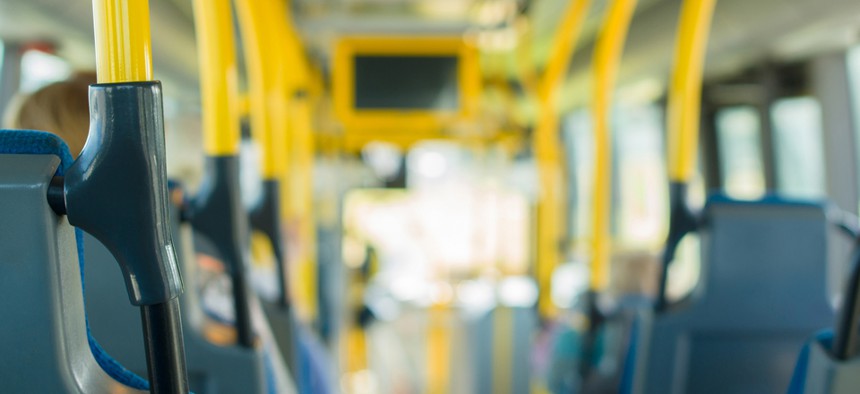Millennials Love Transit Most, Boomers Still Stuck on Cars

Aleph Studio/Shutterstock.com
A new study shows generations bucking their upbringings, with sheltered Millennials choosing the bus.
In 2013, transit ridership in the United States hit a 50-year high, with the nation’s transit systems logging 10.7 billion rides . A new survey from the new transportation-focused philanthropy TransitCenter , seeks to discover who those riders are and what motivates them to get on the trains, buses, and streetcars of American cities.
The answer, according to Who’s On Board: 2014 Mobility Attitudes Survey ? Transit riders are disproportionately young, members of ethnic minorities, and—most important of all—they live in relatively dense neighborhoods where high-quality transit is available. The most important factor for them in choosing transit is travel time and reliability, not fancier amenities such as wifi.
The survey, which gathered data from 11,842 respondents in 46 metropolitan areas, found that the generational divide over transit that many observers have noted over the past few years is real: People under 30 are far more likely to ride public transportation and to express positive feelings about it than older people, regardless of what part of the country they live in or what kind of neighborhood they grew up in.

The survey looked at five geographical categories: the South, the West/Southwest, the West Coast, the Midwest, and what it classified as “traditional cities,” which included cities with “mature and widely used transit systems”—San Francisco, Boston, Philadelphia, New York, and Washington, D.C.
In the “traditional cities,” 43 percent of people under 30 reported riding transit at least once a week, compared with 12 percent of those between 30 and 60 and just 9 percent of those over 60. Even in regions with much lower overall ridership, the trend of young people using transit more held true: 20 percent of those under 30 in the South say they ride transit once a week, compared with 10 percent of those 30 to 60 and 2 percent of those over 60.
The preference for transit also showed up when those under 30 had kids, suggesting that the trend isn’t just about being childfree and easy. Across all income brackets, parents under 30 used transit significantly more than those between 30 and 60. Forty-five percent of the under-30 parent group with incomes above $75,000 said they use transit weekly, compared with 16 percent of parents between 30 and 60 in the same income bracket.
Interestingly, these same young people reported being raised in disproportionately autocentric environments: They were less likely to have been encouraged to walk or bike by their families as children or to have had easy access to transit, and were more likely to have gotten the message from parents that transit was unsafe (as well as the message from peers that it was uncool).
Still, they expressed disproportionately transit-friendly attitudes, even as their elders are continuing to reject the transit option. In the words of the researchers, “The Millennial generation seems to be defying its sheltered, suburban upbringing by delaying the acquisition of a driver’s license and choosing transit. Meanwhile, Baby Boomers, who grew up using transit and were encouraged to do so, are defying their upbringing by avoiding transit now.”

Another key finding is that many respondents say they would like to live in a different kind of neighborhood than the one where they do now. Nearly two-thirds, or 58 percent, of respondents said they would like to live in neighborhood with a mixture of residential, business, and shopping, rather than a strictly residential neighborhood. That didn’t mean that respondents wanted to leave the suburbs for the city, though—that figure combines those with preferences for urban, suburban, and small-town mixed-use neighborhoods.
Only 39 percent of those surveyed are living in such a neighborhood now, suggesting a mismatch between available housing stock and people’s desires. The neighborhood most often chosen as the “ideal” by respondents, with 28 percent favoring it, was a mixed-use suburban neighborhood.
“The findings indicate that attitudes among young people suggest there’s going to be strong and growing support for transit in the decades to come, across the country,” says David Bragdon, executive director of TransitCenter. “This study shows there’s a lot of demand for transit and our local officials need to step up and meet that demand.”
Other key points in the survey:
- Respondents were five times more likely to take transit if they were offered pre-tax commuting benefits by their employers.
- Transit use varied widely by race and ethnicity. Thirty-nine percent of African Americans reported using transit at least once per week, as did 37 percent of Hispanics; 32 percent of American Indians and Alaskan natives; 18 percent of Asian and South Pacific respondents; and just 10 percent of whites.
- In general, transit use decreased as income increased, but respondents in the highest bracket—$150,000 and up—reported riding transit more than any other group except those in the lowest bracket, who make less than $25,000.
- Concern for the environment ranked last among reasons to use transit across all age groups.
( Image via Aleph Studio / Shutterstock.com )





